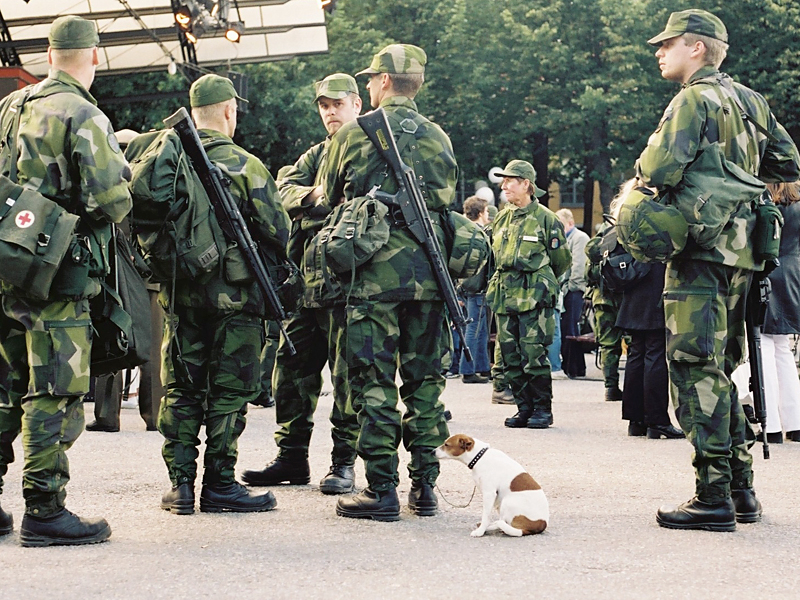Last week, Strategy Page took a look at Sweden’s home defence arrangements, including their first surprise mobilization of the Hemvärnet – Nationella skyddsstyrkorna (Home Guard) in over 40 years:

Swedish Home Guard soldiers in Kungsträdgården, Stockholm on 6 August, 2001.
Photo by Peter Fristedt, via Wikimedia Commons.
On June 4th Sweden held its first nationwide, unannounced mobilization of the Home Guard since 1975. This is another effort to prepare Sweden to deal with the renewed Russian threat. The Home Guard consists of reservists and volunteers whose job is local defense and maintenance of order in a national or local emergency. The Home Guard currently has about 22,000 members organized into 70 infantry battalions (each with 2-5 companies) that are assigned to areas where their part-time soldiers work and live. The Home Guard was created in 1940 and now depends on volunteers who are either former full time or reservist personnel who have at least three months of basic training. Twice a year Home Guard personnel two four day long training exercises. These four-day events involve practicing mobilization and doing what they are expected to do in wartime or a major emergency. In addition, most Home Guard companies (about 70 troops each) hold weekend training sessions ten times a year.
The unannounced mobilization of the Home Guard serves to find out how well the Home Guard as a whole would function. The Home Guard is voluntary and members can leave the force any time they choose to. Since 2014 there have been more volunteers and the Home Guard units could be more selective in who they accepted. The Home Guard mobilization is but the latest effort by Sweden to rebuild its traditional defense. The Home Guard take their training and readiness very seriously, especially when there is an obvious threat. In 1940 it was the Germans but after 1945 it was the Russians, at least until 1991. Now the Russians are once more a threat and the government had to agree that the Home Guard required more attention, resources and training.
Yet the Home Guard is more a police and emergency services than a military one. While the guardsmen are armed they are not expected to be a primary defense against invaders. This point was made when the people of Gotland Island recently pointed out that the local Home Guard was not enough to protect areas like Gotland from a surprise attack. The resulted in the government taking action to put a military garrison back on Gotland.
The Home Guard is not the only component of Swedish military readiness being tested. In late 2017 Sweden held its largest military exercises since the 1990s. Some 19,000 full-time soldiers and reservists were involved and the exercise was based on Russia attempting to seize and hold the island of Gotland after a surprise attack. The defense of Gotland has been an issue in Sweden ever since conscription was ended in 2010. Since the 1990s the military budget and number of full-time troops were cut. That led to the elimination of the Gotland garrison, a small force of full-time soldiers to watch for a Russian surprise attack and alert the reserve forces on the island to mobilize. With the end of conscription, it proved impossible to attract enough volunteers from Gotland to sustain the traditional force of military reservists, who would quickly mobilize and confront the invaders.



